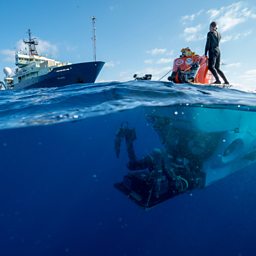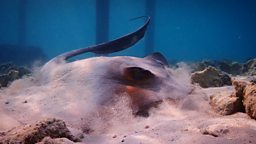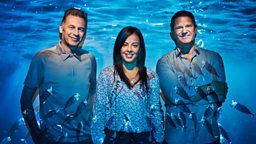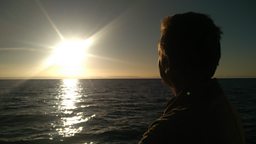The locations
Find out more about where our teams are heading...
Scroll down for more information about the locations and some of the research underway there!
Bimini, The Bahamas
The Bahamas is made up of over 700 islands of breathtaking beauty.
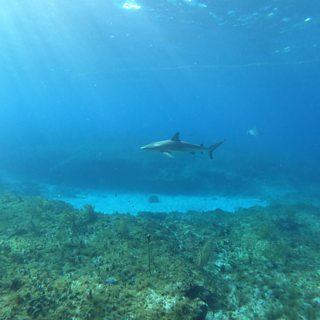
The archipelago spreads over 100,000 square miles of ocean and is a hotspot for wildlife interactions in some of the clearest waters on the planet.
Steve Backshall is diving with the top predators of the series, sharks and rays. He is bringing amazing insights into these fascinating species, and showing how fear is the wrong approach to these beautiful creatures.
We are working with aka Bimini Shark Lab, which has been researching and conserving and the other amazing predators along the island’s shores since 1990. Nobody knows more about the sharks and rays in this area, which makes them a perfect partner for Blue Planet Live!
Sharks and rays are under danger from overfishing, both intentionally for their fins and as bycatch - so we are looking into these threats in more detail, to see their impact on these species that serve as indicators for the general health of our oceans.
From secretive stingrays to huge hammerheads, Steve is diving right in!
Bimini is the closest island to the US and allegedly Ernest Hemingwayβs favourite escapeDid you know?
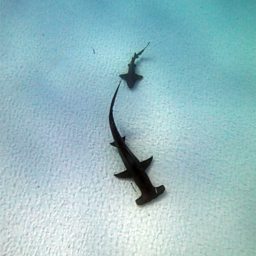
Heron Island, Australia
Heron Island is a coral cay in the midst of the largest single structure created by living organisms in the world - the Great Barrier Reef.
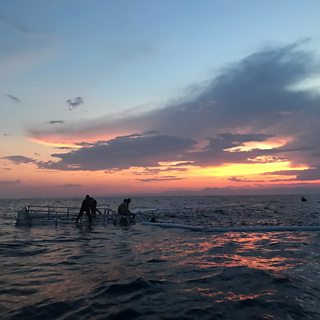
Here, Liz Bonnin is witnessing the stunning biodiversity that this reef has to offer. Most of the species of fish and corals that can be found on the Great Barrier Reef occur in the waters around Heron Island, making it one of the best dive sites in the world. Above the waves, turtles are hatching on the beaches and the chicks of seabirds are taking their first flights.
This stunning location is home to , which is one of the world’s leading coral research centres. It has been monitoring the wildlife here for decades and each year contributes greatly to the scientific understanding of the Great Barrier Reef. Being based on tiny Heron Island means they have unparalleled access to all of the reef’s animals stars.
Liz is in one of the best green turtle breeding grounds in the world, observing the adults laying and babies hatching, before having to brave the gauntlet of predators on their way into the deep blue. is home to huge colonies of seabirds and we are following the struggles of these dedicated parents trying to raise their chicks. Finally are looking at what makes coral so special, from bioluminescence to their huge mass spawning events when the conditions are just right.
Climate change, plastic pollution and other threats to the ocean have a huge effect here. Liz will be looking into the potential impacts, as well as how the tide can be turned.
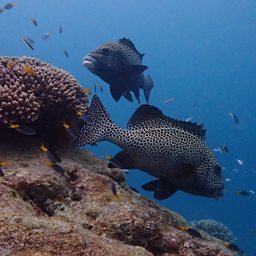
Baja Peninsula, Mexico
The Baja Peninsula, between the Pacific Ocean and the Gulf of California in Mexico, is the second largest peninsula in the world.
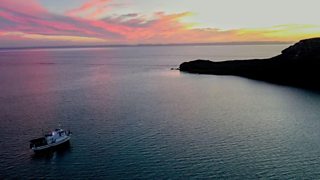
Titled βthe worldβs aquariumβ by Jacques Cousteau, the wildlife encounters here are arguably unparalleled
It’s an incredible location for seeing wildlife both on land and out to sea - spanning over 800 miles, its coastline plays host to an array of marine habitats. Chris Packham is travelling across the peninsula on the trail of whales.
From air, land and sea Chris is tracking different species of whales to give glimpses into the different stages of their lives. The world’s largest nursery of gray whales bringing up their babies, the migrating humpbacks on their way as far north as British Columbia, and the biggest animal to have ever lived - the blue whale - feeding in the seas bordering this Mexican peninsula. Chris is investigating why whales occur in such numbers here and what makes this area so special to their success.
With new technology supplied by one of our partner organisations, , we can see how the whales are faring in the some of the richest seas in the world. They are using their technology to influence the public, policy makers and educators to work together to save our planet’s oceans. Innovative techniques are helping to gather information about whales including cutting-edge new technology, including using drones to measure blowhole temperatures and - now, you can see more about it!
We are also working closely with the which works with the local community to help make the best ecological decisions for the mutual benefit of both the local wildlife and people, especially the curious gray whales, known as “friendlies”, which seem to actively seek out interactions with people.
Atlantis
The Atlantis is one of the most sophisticated research vessels at sea today.
This ship will be our eyes into the science underlying all life in our oceans
Owned and operated by , this high tech vessel will be launching from the west coast of America on a mission to explore the deep.
Kitted out with six science labs, sea floor mapping and precise navigation systems and with the support of their submarine, Alvin, we will be able to dive deep beneath the waves, where few people have ever been before.
Woods Hole Oceanographic Institute were one of the first organisations to explore the deeper parts of our ocean, continually developing groundbreaking technology in their own engineering workshops.
Today they have some of the most sophisticated submersibles around, and pioneering techniques to collect data from even the deepest parts of the ocean.
